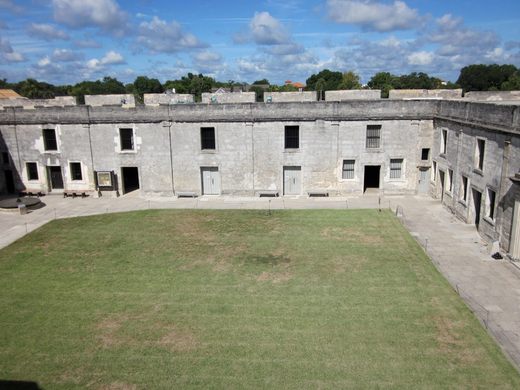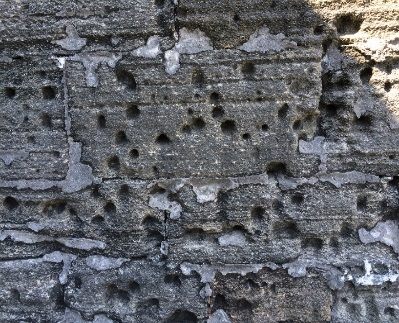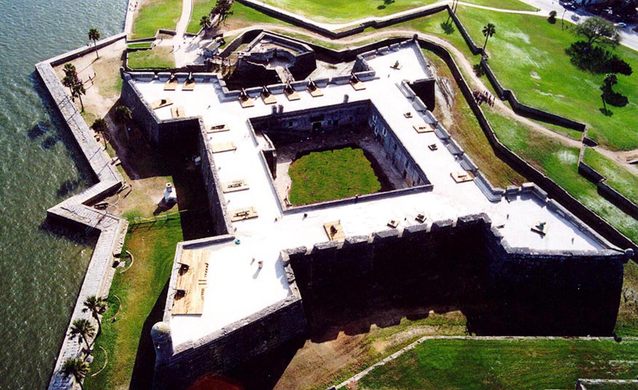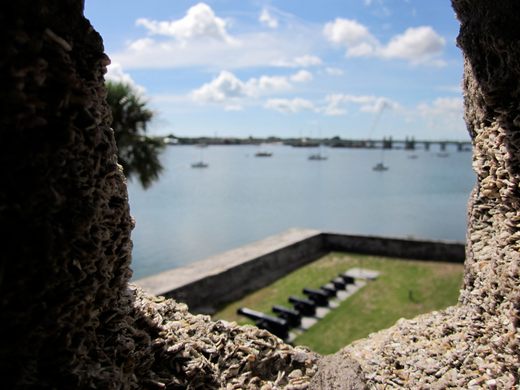Castillo de San Marcos National Monument
Oldest masonry fort in U.S. w/ rampart views; explore history
Oldest masonry fort in U.S. w/ rampart views; explore history































"St. Augustine is the oldest city in the U.S., known for its Spanish colonial architecture as well as Atlantic Ocean beaches." - Taryn White Taryn White Taryn White is a D.C.-based travel writer who covers a wide range of topics, including family travel, hotels, food, aviation, beaches, historical and cultural topics, and wellness travel. She can ofte

"At historic St. Augustine you can visit the Castillo de San Marcos, the oldest masonry fortification in the continental U.S." - Skye Sherman Skye Sherman Skye Sherman is a travel writer based in West Palm Beach, Florida. Aside from traveling, she's also a pilot, scuba diver, bookworm, and fourth-generation Floridian. Her work has appeared in Travel + Leisure, USA Today, Palm Beach Illustrated, Atlas Obscura, and more. Travel + Leisure Editorial Guidelines

"A 17th-century Spanish coquina fortress built in 1695 with commanding rampart views of the inlet; visitors can imagine colonial-era watches for pirates and invaders, speak with National Park Service rangers and reenactors, and enjoy dramatic nighttime illumination and ghostly tales as the grounds are freely walkable around the clock." - Skye Sherman Skye Sherman Skye Sherman is a travel writer based in West Palm Beach, Florida. Aside from traveling, she's also a pilot, scuba diver, bookworm, and fourth-generation Floridian. Her work has appeared in Travel + Leisure, USA Today, Palm Beach Illustrated, Atlas Obscura, and more. Travel + Leisure Editorial Guidelines

"If your group likes Atlantic beaches, history, and photogenic backdrops, St. Augustine—the oldest city in the continental U.S.—offers centuries-old foundations, grand homes, the 17th-century Castillo de San Marcos, delicious seafood, beach time, and spa treatments." - Lindsay Cohn Lindsay Cohn Lindsay Cohn is a writer, editor, and avid traveler who has visited 45 countries across six continents — and counting. She contributes to Travel + Leisure, Hotels Above Par, InsideHook, Well+Good, The Zoe Report, and more. Travel + Leisure Editorial Guidelines

"Sail along the Matanzas Bay on Florida’s shores and you will quickly spot the gray towers of Castillo de San Marcos, a historic fort in St. Augustine, famous for its unbreakable stonewalls. Peppered by holes large and small—the marks of the many battles the fort withstood—these walls have never fallen. Built by the Spaniards in the 17th century to guard their trade routes, the Castillo was attacked by the British multiple times. But even after being shelled with cannonballs and gunfire during a two-month siege in 1702, the fort’s walls didn’t give. Instead, they appeared to be “swallowing” the British cannonballs, which then became embedded within the stone. As one Englishman described it, the rock “will not splinter but will give way to cannon ball as though you would stick a knife into cheese.” It took a team of two material engineering scientists, one of whom was with the U.S. Army Research Laboratory, and an enthusiastic high-school student to discover the secrets of the Castillo’s walls. The walls were built from coquina, a type of sedimentary rock formed from the compressed shells of dead marine organisms. Unlike other types of rock that crack when hit by projectiles, coquina’s tiny shell particles are fluid and have the ability to reshuffle, acting more like foam than stone. That’s why the walls were never broken. Today, the fort is one of Florida’s best-kept secrets. Its walls no longer guard against invasions, but instead provide spectacular views of the Matanzas Bay and the surrounding city of St. Augustine, the oldest European settlement in North America. Now a part of the U.S. National Park Service, the fort offers a Junior Ranger Program for children that traces the fort’s history, which is quite literally written on its battered walls that are still standing strong more than 300 years later." - ATLAS_OBSCURA
